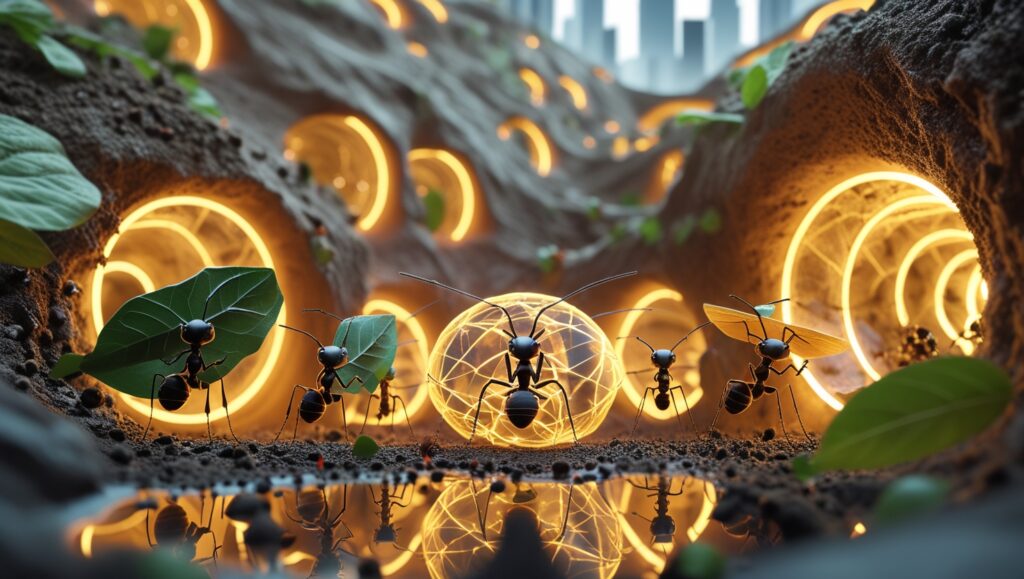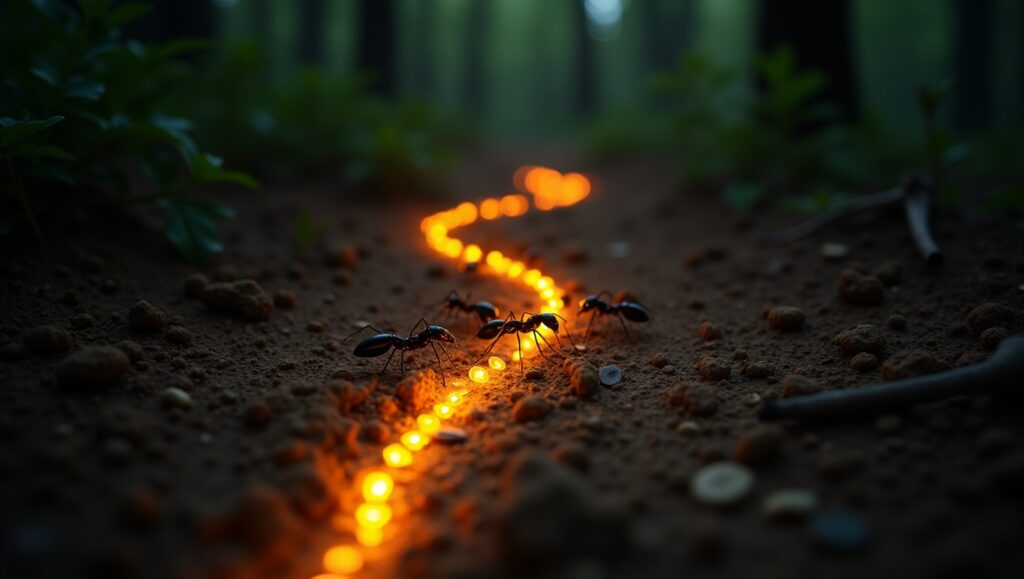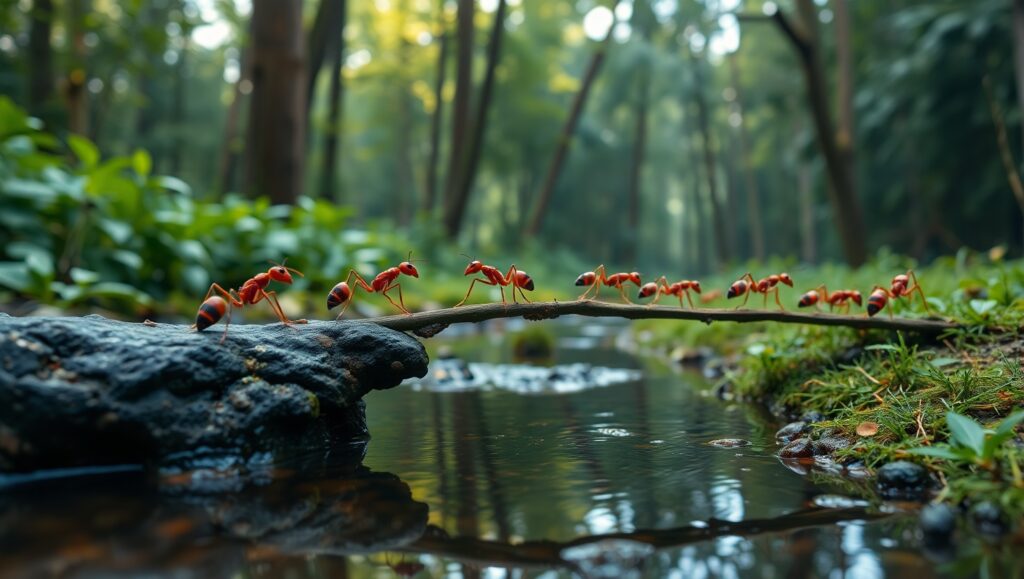When you think of teamwork, what comes to mind? A sports team? A group of coworkers brainstorming in a meeting? What if I told you that some of the best examples of teamwork come from ants? These tiny creatures have been around for over 100 million years, and their ability to work together is so incredible that it makes even the most successful corporations look unorganized in comparison. Let’s dive into the fascinating world of ant colonies and uncover how they’ve mastered teamwork in ways humans can only dream of.
The Perfectly Organized Society

Ant colonies function like well-oiled machines. Each ant has a specific job—some are workers, others are soldiers, and a few are queens. Despite their small brains, ants achieve remarkable feats through collaboration. For example, leafcutter ants form farming systems where they cut leaves, bring them back to the nest, and grow fungus on them for food. It’s like having a farming and food production company rolled into one tiny package.
What makes this even more impressive is that ants don’t have bosses or supervisors. Unlike human organizations, where managers guide and monitor employees, ants rely on instinct and chemical signals to communicate. This ensures tasks are completed without confusion or delay.
Fun Fact #1: Ants can carry objects up to 50 times their own body weight. That’s like a human lifting a car!
Communication Is Key

One of the secrets to an ant colony’s success is their extraordinary communication system. Ants use pheromones, which are chemical signals, to convey messages. If an ant finds food, it leaves a pheromone trail for others to follow. The more ants follow the trail, the stronger the signal becomes, guiding the colony to the food source efficiently.
Compare this to human organizations where communication breakdowns often lead to delays and mistakes. Ants, on the other hand, achieve clarity without a single word. Their ability to quickly adapt and respond to challenges is a lesson in effective communication.
Fun Fact #2: Fire ants can form floating rafts during floods by linking their bodies together. This helps the entire colony survive until they reach dry land.
Division of Labor Done Right
In the corporate world, division of labor is a fundamental principle. But ants take it to a whole new level. Each ant specializes in a specific role from the moment it’s born. Worker ants build and maintain the nest, gather food, and care for the young. Soldier ants defend the colony, and the queen focuses solely on laying eggs.
This level of specialization ensures that every task is completed efficiently. More importantly, ants can switch roles if needed. If a group of worker ants is wiped out, other ants can step in to fill the gap. This flexibility is something even the most adaptable human teams struggle to achieve.
Problem-Solving Masters

Have you ever seen ants form a bridge using their own bodies? This ingenious behavior allows them to cross gaps and obstacles while searching for food or expanding their territory. Ants don’t need blueprints or meetings to figure this out; they instinctively know how to come together for a common goal.
In contrast, human organizations often spend weeks or even months planning solutions to problems. Ants demonstrate that sometimes, simple and immediate action is the most effective way to overcome challenges.
Fun Fact #3: Some ant species herd aphids like livestock, protecting them in exchange for the sweet honeydew they produce.
Resilience in the Face of Disaster

Ant colonies are incredibly resilient. When their nests are destroyed, they waste no time in rebuilding. This tenacity is powered by their collective effort and unwavering focus on survival. Humans can learn a lot from this never-give-up attitude, especially when facing setbacks in work or life.
For example, fire ants are known to rebuild their entire nest within hours of its destruction. Imagine if corporations could recover from disasters with the same speed and efficiency.
Fun Fact #4: The total weight of all the ants on Earth is roughly equal to the total weight of all humans. That’s a lot of ants!
What Humans Can Learn from Ants
- Decentralized Leadership: Ant colonies thrive without a central leader. Decisions are made collectively, ensuring that no single ant’s mistake can derail the entire operation. Companies experimenting with decentralized decision-making often see faster innovation and better teamwork.
- Clear Communication: Just as ants use pheromones, humans can benefit from clearer and more direct communication methods. Eliminating ambiguity in messages can prevent costly misunderstandings.
- Adaptability: Ants’ ability to switch roles and respond to emergencies is a lesson in flexibility. Training employees to handle multiple responsibilities can make teams more robust and resilient.
- Persistence: Ants never give up, no matter how many obstacles they face. This mindset can inspire individuals and organizations to keep striving, even when the odds seem stacked against them.
Fun Fact #5: Some ants have been known to “heal” their injured nestmates by licking their wounds, reducing infection and helping them recover faster.
Conclusion
Ants may be small, but their teamwork and problem-solving skills are nothing short of extraordinary. By working together seamlessly, they achieve what seems impossible. Corporations and individuals alike can draw valuable lessons from these tiny creatures. Whether it’s through better communication, adaptability, or resilience, there’s much to learn from the masters of teamwork. So, the next time you see an ant, take a moment to appreciate the incredible teamwork happening right under your feet.



